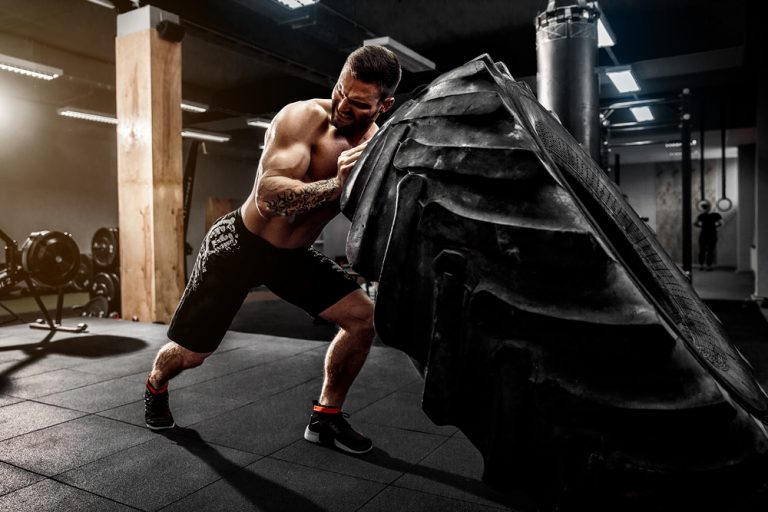You want to get big? That will require a lot of heavy lifting, both in the gym and in the kitchen. The gym part is relatively simple, just not easy. Plenty of bulking programs have been published on the sport websites and forums.
I suggest picking one written by a coach you trust and hitting it with intense desire and determination.
The lifting you do in the kitchen is another matter. Adding weight, meaning scale weight, is easy. Simple eat anything that isn't nailed down for a few months and your weight-gaining woes will be a memory, along with your abs. Bulking can result in a three to four pound fat gain for every pound of new muscle. That isn't an acceptable trade off for any bodybuilder, especially one who doesn’t want to own a separate set of fat pants.
I will give you a few tips what to do to get the size without fat.
The program is divided into two different days — one plan for training days, the other for off days. By training, I mean heavy weight training in the gym, not any type of cardio or conditioning. A cardio-only day is considered a non-training day in this plan.
Training days
The training days maximize growth through a higher carbohydrate intake, very little fat, and a good amount of lean protein. The training day schedule takes advantage of the powerful hormone insulin by timing carbohydrate intake for when nutrients will be preferentially forced into muscle cells and not body fat cells. To speed nutrients to your muscles, consume a during/post training shake composed of fast absorbing carbs and protein. This shake should be sipped throughout your training and be finished by the time the workout is completed. The possible exception to this would be on heavy squatting and deadlifting days when consuming anything while training could cause discomfort or vomiting. In this case, drink the shake after finishing those main exercises or immediately post workout.
After training meal should be eaten within the next 60 to 90 minutes to take advantage of the increased nutrient uptake window that immediately follows heavy training. Practically speaking, eat when you feel you've digested your shake and are ready to eat.

Non-training day
While the focus of the training day schedule is to promote muscle hypertrophy, the goal of non-training day program is to mitigate body fat accumulation. This is accomplished by significantly decreasing carbohydrate intake, reducing the total number of meals and calories, and by combining healthy fats with protein at optimal times. Reducing carbohydrate intake and timing them properly keeps insulin under control, effectively preventing additional body fat storage. This is why the plan substantially reduces or eliminates carbs intake at these times and replaces it with protein and healthy fats. This help mitigates appreciable fat gain, even with a calorie surplus.
While cardio is often unnecessary and sometimes not even desirable in a growth phase, it can be used with this program depending on goals and body type.
For those that either have a genetic predisposition for fat gain or desire to remain as lean as possible, cardio is recommended. Cardio can also be beneficial to those that complain of poor appetite. I know pro bodybuilders that perform cardio in the off-season simply as a means to stimulate their appetite for the work that must be done at the training table.
There are two times when body fat stores are most easily tapped for energy: first thing in the morning before eating and immediately post training. I'd start with 30 minutes of cardio on an empty stomach first thing in the morning, three times per week on non-training days. If body fat accumulation is still too much, increase in small increments from there.
Remember, this isn't a program to decrease body fat levels and get into bodybuilding stage condition, but to put on as much lean mass as possible while limiting fat gain. If too much cardio is performed, muscular growth potential will be severely inhibited.

Sample Diet Plan for a 100kg lifter
Training days: 7 meals plus workout nutrition
Meal 1: 90 grams carbs, 35 grams protein
Meal 2: 65 grams carbs, 35 grams protein
Meal 3: 65 grams carbs, 35 grams protein
During/post workout shake: 75 grams carbs, 50 grams protein
Meal 4: (post training meal) 90 grams carbs, 35 grams protein
Meal 5: 65 grams carbs, 35 grams protein
Meal 6: 35 grams protein, unlimited veggies
Meal 7: (bedtime shake) 100 grams casein/ whey blend
Non-training days: 7 meals
Meal 1: 80 grams carbs, 50 grams protein
Meal 2: 70 grams carbs, 50 grams protein
Meal 3: 70 grams carbs, 50 grams protein
Meal 4: 50 grams protein, up to 2 cups veggies, 15 grams healthy fat
Meal 5: 50 grams protein, up to 2 cups veggies, 15 grams healthy fat
Meal 6: 50 grams protein, 15 grams of healthy fat
Meal 7: (bedtime shake) 100 grams casein/ whey blend, 15 grams healthy fat
How to get big without gaining fat - summary
Working with the body's natural insulin production and utilization is the ticket to maximizing muscular hypertrophy while minimizing fat gain. When combined with a kick-ass weight training routine featuring heavy doses of the basics, most trainees following this program can expect significant muscle gain in as little as eight weeks.






